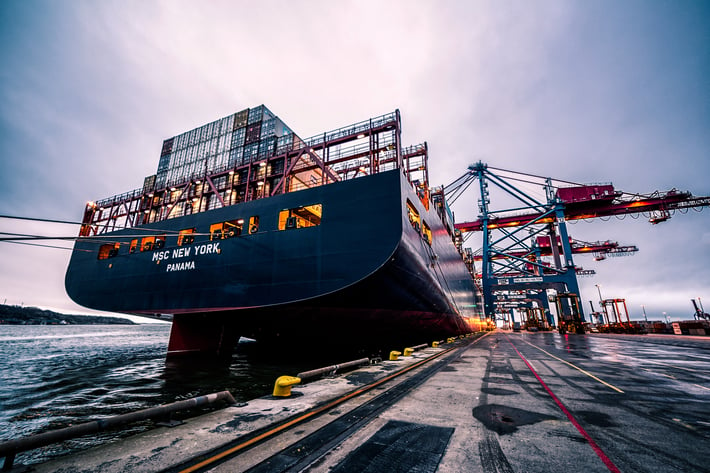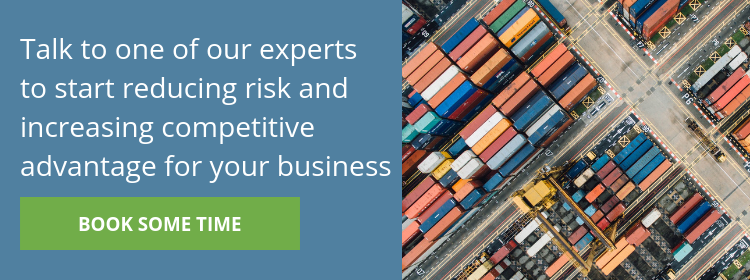
Liner operators have decided on their strategies to cater for the IMO’s low-sulphur regulations from January 2020, but their commercial reactions and costs will vary, and so will impact on profitability next year and beyond.
The IMO’s low-sulphur fuel regulations have prompted an ongoing (and somewhat fractious) debate amongst bunker suppliers, refiners, shippers, shipowners and operators as to the "right" way forward. As an industry we seem to still be asking more questions, rather than obtaining any solid answers, regarding the landscape post 1 January 2020. This aside, we know that liner operators have already, to a certain extent, chosen a side, and made significant investments to manage their forward risk. This is above and beyond the costs of cleaning and preparing vessels’ tanks in late 2019.
Any forward-thinking operator is likely to have chosen a strategy some time ago – deciding whether or not to install scrubber technology, or to utilise (potentially more expensive) compliant low-sulphur fuel of 0.5% or below. Shippers and freight forwarders, who are well aware that they will be ultimately footing an additional industry fuel bill of circa USD 10bn to USD 12bn per year, are now asking questions concerning the transparency of the methodology for operators’ charging mechanisms. Although there are some companies giving prices for low-sulphur fuel oil (LSFO) from early 2020, these forward estimates are still very much "the big unknown" for the industry. The current estimated spread in prices between IFO380 heavy fuel and LSFO ranges from USD 200 to USD 400 per tonne, which is why scrubber technology appears to be popular with many liner players.
Preparation costs on the rise
The latest data that we can see (which is constantly being updated) suggests that around 380 delivered container vessels have been, or will be, fitted with scrubbers, with another 150 vessels on order which will be scrubber-fitted by the time they enter the global fleet at the end of 2021. If we assume that USD 5m represents an average cost of a scrubber installation, this equates to a total of USD 2.65bn for the industry. We estimate approximately 50% of this cost will be for the account of independent shipowners, whose outlay is expected to be recovered from these ships subsequently generating a premium on the daily charter rate.
The installation of scrubbers on the owned fleets of the top 12 liner companies will cost circa USD 1.24bn. Lines which have spent the most money on scrubber technology, and by default, are maintaining a "heavy fuel oil strategy", are Evergreen, MSC and HMM. Maersk Line, Hapag-Lloyd and Ocean Network Express have primarily decided upon utilising compliant fuel, with COSCO and Zim saying very little in the public domain. CMA CGM is the one major operator which has settled on LNG as an alternative fuel, with 18 of its newbuildings able to utilise LNG upon delivery. Shipbrokers estimate that the additional cost for constructing LNG-ready vessels amounts to a USD 20m premium per vessel. With profit margins already under significant pressure, liner companies will seek to recover all of these costs, whether for scrubbers or alternative fuels, from shippers.
|
Estimated IMO 2020 compliance costs for the top 12 liner companies (by TEU capacity) |
|
|
|||||||
|
|
Fleet (TEU) July 2019 |
No. ships |
% owned |
% chartered |
Scrubbers (fleet) |
Scrubbers (orderbook) |
Est. cost $m |
LNG cost $m |
Total cost $m |
|
Maersk Line |
4,146,096 |
715 |
56.8% |
43.2% |
2 |
10 |
10 |
||
|
MSC |
3,410,687 |
537 |
30.9% |
69.1% |
74 |
11 |
425 |
425 |
|
|
COSCO Group |
2,902,653 |
477 |
51.9% |
48.1% |
0 |
0 |
|||
|
CMA CGM |
2,681,636 |
519 |
38.6% |
61.4% |
10 |
5 |
75 |
360 |
435 |
|
Evergreen Line |
1,286,105 |
207 |
45.0% |
55.0% |
45 |
30 |
375 |
375 |
|
|
Hapag-Lloyd |
1,688,609 |
235 |
61.3% |
38.7% |
10 |
50 |
20 |
70 |
|
|
Ocean Network Express (ONE) |
1,539,835 |
214 |
35.2% |
64.8% |
8 |
40 |
40 |
||
|
Yang Ming |
647,474 |
97 |
29.0% |
71.0% |
15 |
75 |
75 |
||
|
HMM |
425,550 |
71 |
30.4% |
69.6% |
12 |
20 |
160 |
160 |
|
|
PIL |
396,544 |
121 |
40.7% |
59.3% |
0 |
0 |
|||
|
Zim |
288,383 |
61 |
3.2% |
96.8% |
6 |
30 |
30 |
||
|
Wan Hai |
270,361 |
94 |
60.3% |
39.7% |
0 |
0 |
|||
|
Total |
19,683,933 |
3,348 |
|
|
|
|
1,240 |
|
1,620 |
The above table excludes scrubber investments made by independent owners of containerships, and shows the varying strategies employed by the liner companies. For example both Evergreen and MSC have fitted a relatively high percentage of their owned fleets with scrubbers, when compared to CMA CGM and Hapag-Lloyd. The actual price of LSFO in 1Q 2020 will determine how quickly these costs will be recovered by the liner companies.
OK - so what?
The impact of 2020 on the liner markets is very difficult to predict, but there are questions we feel need to be considered when assessing the counterparty risk of major liner companies:
Should base rates decline, as they have done many times in the past, any substantive recovery of increased fuel costs merely papers over the cracks of potentially significant declines in bottom line profits.
- Paying for the additional cost assumes that the industry’s starting point for any profitability does not change, i.e. that future demand growth does not significantly falter in the future, and that average freight rates (excluding any BAF element) in 2020 remain on par with those seen in 2019.
We argue that carriers may struggle to implement a separate BAF “surcharge” on some routes.
- Operators with a significantly higher number of beneficial cargo owner customers (compared to spot market clients, who will therefore build in a binding BAF element into any long-term contract), may be better off. Despite carrier notices, some major trade lanes such as Asia to Mid-East, Asia to West Coast South America and intra-Asia do not currently have a recognised separate BAF element from the base freight rate.
- The current proposals for industry-wide bunker charging formulae, utilising average size vessels and average fuel consumption, does not recognise that individual carriers have different cost bases, which in turn are dependent on their fleet break-downs and fuel strategies. In given individual trade lanes, the size of vessels (and fuel consumption) in operation, varies considerably.
We believe some liner operators may have little choice but to primarily utilise compliant fuel and/or incur a premium on daily charter hire costs as independent shipowners will aim to recoup their additional spend on scrubbers.
- The respective owned to chartering breakdown of the top liner operator fleets varies significantly, which is likely to see the financial impact of 2020 vary significantly.
Should there be a reasonable spread between IFO380 and LSFO prices, then operators who have invested heavily here will prop up profitability.
- The cost of fitting a USD 5m scrubber to an 18,000 TEU vessel operating on the Asia to North Europe trade lane at 90% utilisation (with a vessel operator charging USD 100 per TEU as a separate BAF) and recovering only 50% of this from clients, could re-coup 80% of the original CAPEX investment within the first year. Into year two, operators could theoretically be making a profit compared to the original investment.
- With MSC, CMA CGM, Evergreen and HMM already spending a collective USD 1.4bn in preparation for IMO 2020, before any cost elements for low sulphur fuel oil are built in, BAF alone may not be sufficient to recoup this cost.
Infospectrum is regularly reviewing the counterparty risk of large and small players in the liner sector. If you would like to discuss this sector further, click the button below to get in touch.


